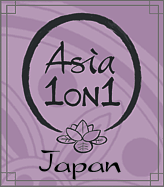|
|
|

History
| |
Jomon Period:
The Jomon Period is the earliest known period in Japanese history extending from about 10,000 BC to about 300 BC. It was characterized by some of the earliest known pottery in the world reflecting a stable society of either Mesolithic or Neolithic nature.
Top
|
|
|
|
|
| |
Yayoi Period:
The Yayoi Period is believed to have lasted from about 900 BC to about 250 AD. Remains of this society were found in the present-day Tokyo area and seem to indicate the beginning of rice cultivation in paddy fields. It also had it own distinctive style of earthenware.
Top
|
|
|
|
|
| |
Kofun Period:
The Kofun Period, also called the Yamato Period, was characterized by two periods. The first was the Kofun Period. Kofun were large earthen tombs. This was a period that saw the unification of small kingdoms into one nation around the 4th century AD. The second period was the Asuka Period, founded in an area of the current Nara prefecture. During this period Buddhism was introduced from China through Korea. There were many contacts with China during this period (the Sui and Tang Dynasties in China) that left influences on many cultural practices that can still be seen today.
Top
|
|
|
|
|
| |
Nara Period:
The Nara Period began in 710 when the Empress Gemmei moved the capital to Nara. She modeled Nara after Chang’an, the Tang Dynasty capital, now called Xi’an. In 784 the capital was moved to Nagaoka to escape the influence of the Buddhist priests, and then moved to Kyoto in 794.
Top
|
|
|
|
|
| |
Heian Period:
The Heian Period lasted from 794 to 1185. The capital was in Kyoto for the entire period. It is considered the height of Japanese Imperial culture, especially in the areas of the arts, poetry and literature. Heian means “peach” in Japanese.
Top
|
|
|
|
|
| |
Kamakura Period:
The Kamakura Period lasted from 1185 to 1333. The capital was in Kyoto for the entire period. It is considered the height of Japanese Imperial culture, especially in the areas of the arts, poetry and literature. Heian means “peach” in Japanese.
Top
|
|
|
|
|
| |
Muromachi Period:
The Muromachi Period lasted from 1336 to 1573. The capital was in Kyoto for the entire period. It is considered the height of Japanese Imperial culture, especially in the areas of the arts, poetry and literature. Heian means “peach” in Japanese.
Top
|
|
|
|
|
|
|
|
|

